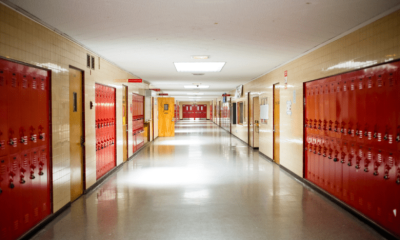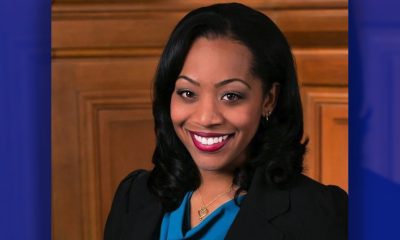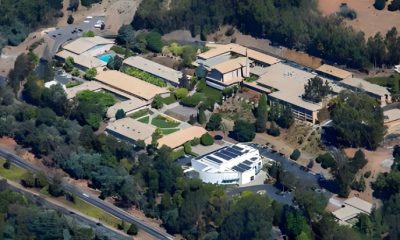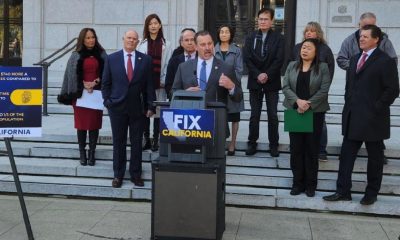Education
Drive to Cap State Charter School Growth Stalls

Earlier this year, it looked like California charter schools faced a mortal threat in the face of the first serious attempts in the state Legislature to put a cap on their growth.
But those efforts have fizzled, at least for this year.
Unhappiness with charter schools was an underlying theme in the two high-profile teacher strikes earlier this year in Los Angeles and Oakland.
As a result of the strike, the Los Angeles Unified school board passed a resolution calling on Sacramento to impose a temporary moratorium on expansion in the district. Oakland Unified issued a similar call, as did the nearby West Contra Costa Unified School District, which has also seen rapid growth in charter school enrollments in recent years.
In the wake of these calls, the state’s major teachers’ unions backed two bills in the Legislature that would have imposed a cap on charter expansion in the state.
In the Senate, SB 756, introduced by Sen. Maria Elena Durazo, D-Los Angeles, formerly a prominent labor leader in Los Angeles, would have imposed a five-year moratorium on any new charter schools. And in the Assembly, Assemblyman Kevin McCarty, D-Sacramento, introduced AB 1506 to place a cap on charter schools at the number in operation on Jan. 1, 2020.
His bill would have allowed for new charters in a district as long as they didn’t push the charter enrollment to over 10 percent of the district’s total student enrollment.
Durazo amended her bill to call for a two-year instead of a five-year moratorium, but that was not sufficient to move it along in the Senate.
Last week, both Durazo and McCarty, reading the political tea leaves, decided not to put their bills to a vote in their respective chambers, and turned their bills into two-year bills, which means they will be considered in the next legislative session.
That does not mean that charter schools have escaped possible further regulation. Two bills are still alive that could have a significant impact on charter expansion in the state.
AB 1505 would remove the power of the State Board of Education to approve charter applications after they have been denied by school districts and county offices of education, and also to take into account whether new charter schools would have “negative financial, academic, or facilities impact” on the schools in their authorizing districts.
Currently, school districts are barred from taking financial impact into account. Many charter school advocates think that giving districts the right to take financial impact into account would give districts the license to reject virtually any charter application.
Another bill, AB 1507, would prohibit charter schools from opening additional schools outside the district where they received their original charter.
Nonetheless, Myrna Castrejon, CEO of the California Charter Schools Association, hailed the stalling of the two bills that would have placed a cap or moratorium on charter expansion as a major victory. “The collective power of charter school leaders, teachers, families and students defeated this extreme legislation,” she said.
Another complicating factor is that Newsom called on State Superintendent of Public Instruction Tony Thurmond to establish a Charter Task Force to make recommendations on a range of charter school reforms. That panel is still meeting, and is due to issue its recommendations by the end of this month. There was significant disagreement in the Legislature over whether to proceed with reforms of California’s 27-year-old charter law, or whether to wait until the task force had an opportunity to issue its recommendations.
Eric Premack, executive director of the Charter Schools Development Center in Sacramento, which supports and lobbies for small charter schools, said the decisions to hold the bills indicate that “support for charter schools among more moderate legislators is a lot stronger than some had anticipated.”
At the same, he said “we will learn more when a bill with task force recommendations comes up.” For years, he said, “legislators have not had to think much about charter school policy; charter schools have been relying on Jerry Brown and billionaires to carry their water (and defeat or veto the bills). Now legislators are seeing a genuine grassroots base that they will not want to take lightly.”
Despite complaints from many charter advocates about obstacles they face in establishing schools, the charter sectors have enjoyed a relatively steady growth over the past quarter century, although the growth has slowed considerably over the past five years. With over 1,300 charter schools serving over 600,000 students, about one-sixth of the nation’s charter school student enrollments are enrolled in California charter schools.
Activism
LIVE! — TOWN HALL ON RACISM AND ITS IMPACT — THURS. 11.14.24 5PM PST
Join us for a LIVE Virtual Town Hall on the Impact of Racism hosted by Post News Group Journalist Carla Thomas and featuring Oakland, CA NAACP President Cynthia Adams & other Special Guests.
Thursday, November 14, 2024, 5 p.m. – 6:30 p.m. PST
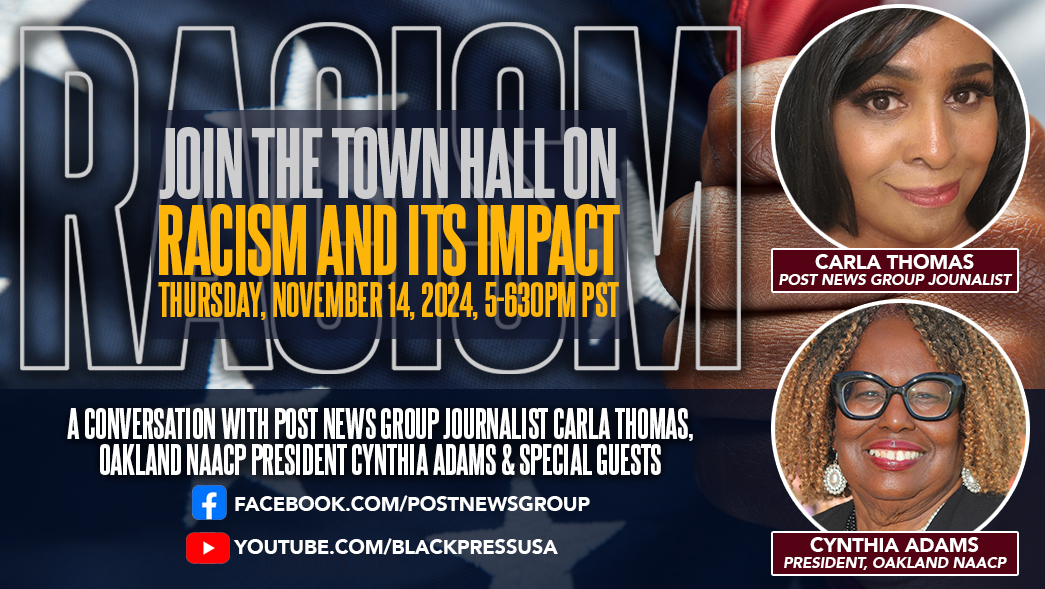

Join us for a LIVE Virtual Town Hall on the Impact of Racism hosted by Post News Group Journalist Carla Thomas and featuring Oakland, CA NAACP President Cynthia Adams & other Special Guests.
Thursday, November 14, 2024
5 p.m. – 6:30 p.m. PST
Discussion Topics:
• Since the pandemic, what battles have the NAACP fought nationally, and how have they impacted us locally?
• What trends are you seeing concerning Racism? Is it more covert or overt?
• What are the top 5 issues resulting from racism in our communities?
• How do racial and other types of discrimination impact local communities?
• What are the most effective ways our community can combat racism and hate?
Your questions and comments will be shared LIVE with the moderators and viewers during the broadcast.
STREAMED LIVE!
FACEBOOK: facebook.com/PostNewsGroup
YOUTUBE: youtube.com/blackpressusatv
X: twitter.com/blackpressusa
Art
Brown University Professor and Media Artist Tony Cokes Among MacArthur Awardees
When grants were announced earlier this month, it was noted that seven of the 22 fellows were African American. Among them are scholars, visual and media artists a poet/writer, historian, and dancer/choreographer who each receive $800,000 over a five-year period to spend as they see fit. Their names are Ruha Benjamin, Jericho Brown, Tony Cokes, Jennifer L. Morgan, Ebony G. Patterson, Shamel Pitts, Jason Reynolds, and Dorothy Roberts. This is the third in the series highlighting the Black awardees.

Special to The Post
When grants were announced earlier this month, it was noted that seven of the 22 fellows were African American. Among them are scholars, visual and media artists a poet/writer, historian, and dancer/choreographer who each receive $800,000 over a five-year period to spend as they see fit. Their names are Ruha Benjamin, Jericho Brown, Tony Cokes, Jennifer L. Morgan, Ebony G. Patterson, Shamel Pitts, Jason Reynolds, and Dorothy Roberts. This is the third in the series highlighting the Black awardees. The report below is excerpted from the MacArthur Fellows web site.
Tony Cokes
Tony Cokes, 68, is a media artist creating video works that recontextualize historical and cultural moments. Cokes’s signature style is deceptively simple: changing frames of text against backgrounds of solid bright colors or images, accompanied by musical soundtracks.
Cokes was born in Richmond, Va., and received a BA in creative writing and photography from Goddard College in 1979 and an MFA from Virginia Commonwealth University in 1985. He joined the faculty of Brown University in 1993 and is currently a professor in the Department of Modern Culture and Media.
According to Wikipedia, Cokes and Renee Cox, and Fo Wilson, created the Negro Art Collective (NAC) in 1995 to fight cultural misrepresentations about Black Americans.[5]
His work has been exhibited at national and international venues, including Haus Der Kunst and Kunstverein (Munich); Dia Bridgehampton (New York); Memorial Art Gallery University of Rochester; MACRO Contemporary Art Museum (Rome); and the Carpenter Center for the Visual Arts (Harvard University), among others.
Like a DJ, he samples and recombines textual, musical, and visual fragments. His source materials include found film footage, pop music, journalism, philosophy texts, and social media. The unexpected juxtapositions in his works highlight the ways in which dominant narratives emerging from our oversaturated media environments reinforce existing power structures.
In his early video piece Black Celebration (A Rebellion Against the Commodity) (1988), Cokes reconsiders the uprisings that took place in Black neighborhoods in Los Angeles, Detroit, Newark, and Boston in the 1960s.
He combines documentary footage of the upheavals with samples of texts by the cultural theorist Guy Debord, the artist Barbara Kruger, and the musicians Morrisey and Martin Gore (of Depeche Mode).
Music from industrial rock band Skinny Puppy accompanies the imagery. In this new context, the scenes of unrest take on new possibilities of meaning: the so-called race riots are recast as the frustrated responses of communities that endure poverty perpetuated by structural racism. In his later and ongoing “Evil” series, Cokes responds to the rhetoric of the Bush administration’s “War on Terror.”
Evil.16 (Torture.Musik) (2009–11) features snippets of text from a 2005 article on advanced torture techniques. The text flashes on screens to the rhythm of songs that were used by U.S. troops as a form of torture.
The soundtrack includes Metallica’s “Enter Sandman” and Britney Spears’s “… Baby One More Time,” songs known to have been played to detainees at deafening decibel levels and on repeated loops. The dissonance between the instantly recognizable, frivolous music and horrifying accounts of torture underscores the ideological tensions within contemporary pop culture.
More recently, in a 2020 work entitled HS LST WRDS, Cokes uses his pared-down aesthetic to examine the current discourse on police violence against Black and Brown individuals. The piece is constructed around the final words of Elijah McClain, who was killed in the custody of Colorado police. Cokes transcribes McClain’s last utterances without vowels and sets them against a monochromatic ground. As in many of Cokes’s works, the text is more than language conveying information and becomes a visualization of terrifying breathlessness. Through his unique melding of artistic practice and media analysis, Cokes shows the discordant ways media color our understanding and demonstrates the artist’s power to bring clarity and nuance to how we see events, people, and histories.
California Black Media
On Your November Ballot: Prop 2 Seeks to Modernize Public Education Facilities
Proposition 2 would authorize the state to issue $10 billion in bonds with $8.5 billion dedicated to elementary and secondary educational facilities and $1.5 billion for community college facilities. If approved, the proposition will make changes to the formula used to determine the amount each district is required to contribute to be eligible to receive state funding from the bond revenue. It would also require the state government to cover between 50 and 55% of construction project costs and 60 and 65% of modernization project costs.

By Edward Henderson, California Black Media
Proposition 2 would authorize the state to issue $10 billion in bonds with $8.5 billion dedicated to elementary and secondary educational facilities and $1.5 billion for community college facilities.
If approved, the proposition will make changes to the formula used to determine the amount each district is required to contribute to be eligible to receive state funding from the bond revenue. It would also require the state government to cover between 50 and 55% of construction project costs and 60 and 65% of modernization project costs.
Supporters argue that the money is critical for making safety improvements in schools, as well as modernizing science labs, performing arts spaces and kindergarten classrooms. School districts in lower-income areas have no other way to pay for these improvements.
According to the Public Policy Institute of California, 38% of students attend schools that don’t meet the state’s minimum safety standards. The research shows that schools with sub-standard facilities tend to have students with lower attendance rates, lower morale and lower overall academic performance.
California Black Media spoke with a Los Angeles Unified School District (LAUSD) spokesperson on why she believes it should be a YES vote on Prop 2.
“Measure US, Los Angeles Unified’s Local Public Schools Safety and Upgrades Measure on the November ballot would provide $9 billion to upgrade Los Angeles public schools for safety and 21st century student learning and college and career preparedness. The average annual cost to property owners is estimated at 2.5 cents per $100 of assessed (not market) property value. The Los Angeles Unified Board of Education adopted a Resolution on October 22 to support Los Angeles Unified’s Measure US, and State Propositions 2 and 4,” the spokesperson said.
Opponents argue that the state should include school repairs in its regular budget instead of putting the burden on taxpayers. Opponents also argue that the proposition would not directly impact students. The Howard Jarvis Taxpayers Association is on record as one of the organizations opposing the proposition.
“Proposition 2 is $10 billion of bonds, new state debt, to pay for school facilities. It is almost certain to result in higher property tax bills, because school districts must provide a ‘local match’ of funds in order to receive money from the Prop. 2 state bonds. That will lead to districts issuing new local school bonds, which are paid for by adding new charges to property tax bills,” said Jarvis.
Opponents also have voiced concerns about what they view as an inequitable distribution of funds. They believe that lower-income school districts should receive a greater share of the state’s sliding scale for matching funds.
“Enrollment is declining in both K-12 district schools and community colleges and the declines are projected to continue. But Proposition 2 commits California to pay an estimated $18 billion, including interest, for school buildings that may not even be necessary. Vote no on proposition 2.”
A “yes” vote gives approval to the state to issue $10 billion in bonds to fund construction and modernization of public education facilities.
A “no” vote will prohibit the state from issuing $10 billion in bonds to fund construction and modernization of public education facilities.
-

 Alameda County4 weeks ago
Alameda County4 weeks agoAlameda County District Attorney Pamela Price Announces $7.5 Million Settlement Agreement with Walmart
-

 Activism3 weeks ago
Activism3 weeks ago‘Jim Crow Was and Remains Real in Alameda County (and) It Is What We Are Challenging and Trying to Fix Every Day,’ Says D.A. Pamela Price
-

 Bay Area4 weeks ago
Bay Area4 weeks agoIn the City Attorney Race, Ryan Richardson Is Better for Oakland
-

 Activism3 weeks ago
Activism3 weeks agoOakland Post: Week of October 30 – November 5, 2024
-

 Alameda County3 weeks ago
Alameda County3 weeks agoD.A. Price Charges Coliseum Flea Market Vendors in Organized Retail Theft Case
-

 Activism3 weeks ago
Activism3 weeks ago‘Criminal Justice Reform Is the Signature Civil Rights Issue of Our Time,’ says D.A. Pamela Price
-

 Activism3 weeks ago
Activism3 weeks ago“Two things can be true at once.” An Afro-Latina Voter Weighs in on Identity and Politics
-

 Activism2 weeks ago
Activism2 weeks agoLIVE! — TOWN HALL ON RACISM AND ITS IMPACT — THURS. 11.14.24 5PM PST





